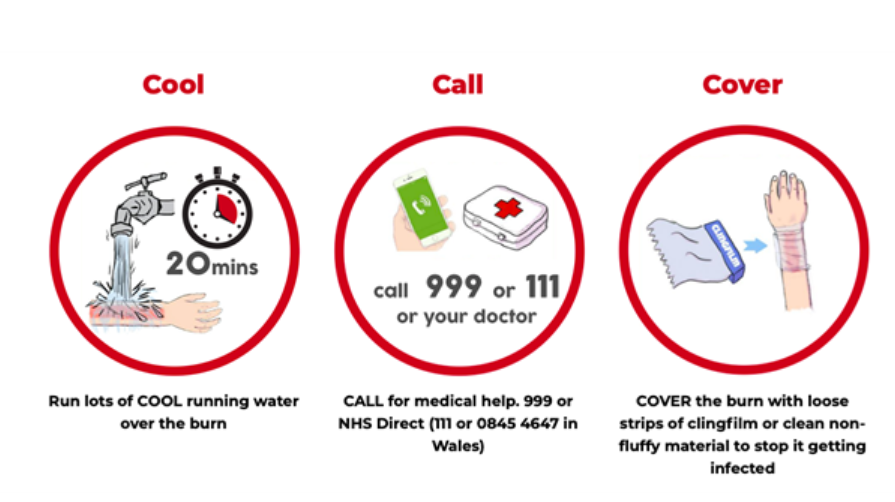Burn Prevention & What to do in an Emergency
Did you know 30 children a day are burned by hot drinks in the UK?
Burns can leave people scarred for life and result in needing surgery.
Today marks National Burns Awareness Day, the aim is to raise awareness and share safety tips around burns.
What to do in an emergency.
Knowing what to do if your child suffers a burn can mean the difference between lifelong scarring and a child who heals well.
Remember: COOL, CALL, COVER
COOL the burn for 20 minutes under cool running water.
CALL for help
COVER the burn loosely with cling film
Many severe burns and scalds affect babies and young children. The following advice can help reduce the likelihood of your child having a serious accident.
In the kitchen
it's best to keep your toddler out of the kitchen, well away from kettles, saucepans and hot oven doors – you could put a safety gate across the doorway to stop them getting in
use a kettle with a short or curly cord to stop it hanging over the edge of the work surface, where it could be grabbed
when cooking, use the rings at the back of the cooker and turn saucepan handles towards the back so your child can't grab them
In the bathroom
never leave a child alone in the bath, even for a moment
fit a thermostatic mixing valve to your bath's hot tap to control the temperature
put cold water into the bath first, then add the hot water – use your elbow to test the temperature of the water before you put your baby or toddler in the bath
Throughout the home
put your iron, hair straighteners or curling tongs out of reach while they cool down after you have finished using them
fit fireguards to all fires and heaters
keep matches, lighters and lit candles out of young children's sight and reach
Hot drinks
keep hot drinks well away from young children – a hot drink can still scald 15 minutes after it was made
put hot drinks down before you hold your baby
after warming a bottle of milk, shake the bottle well and test the temperature of the milk by placing a few drops on the inside of your wrist before feeding – it should feel lukewarm, not hot
do not let your child drink a hot drink through a straw

